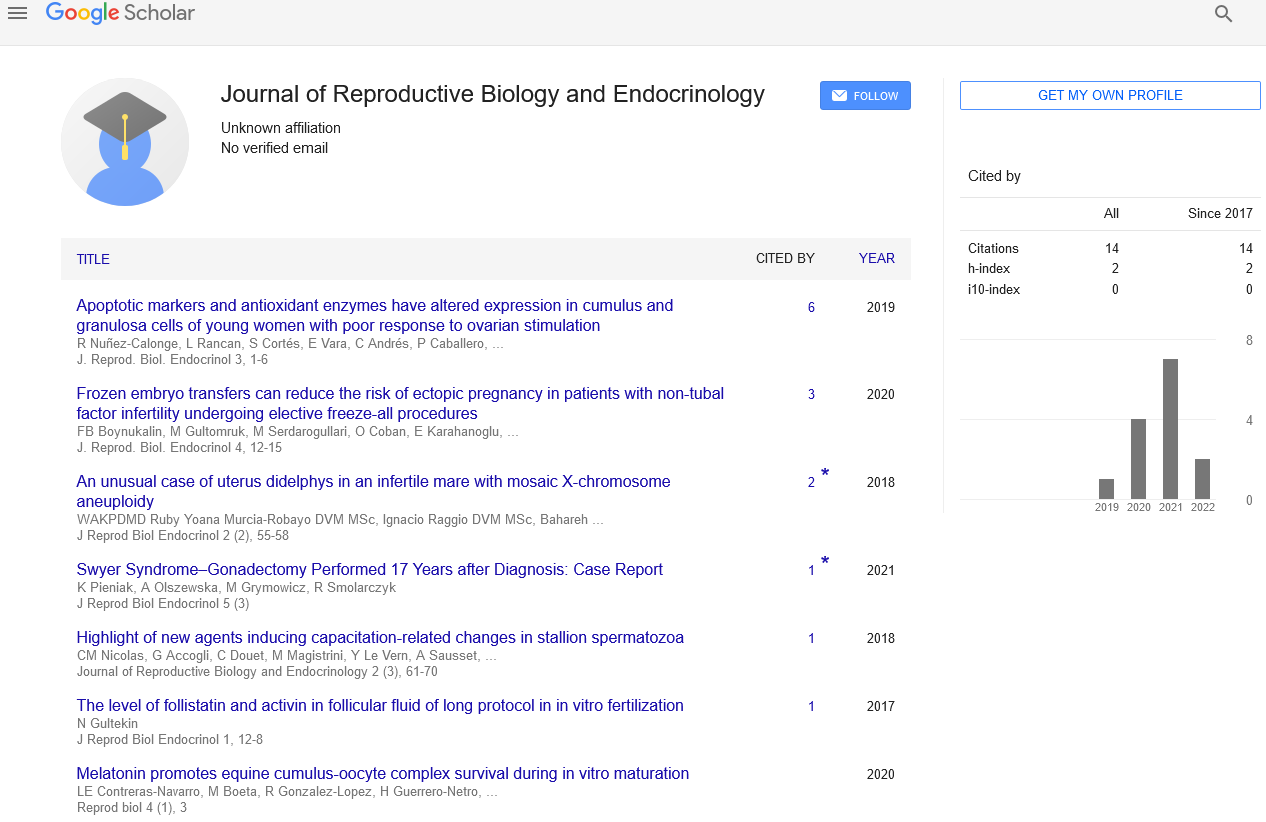Clinical characteristics of hypergonadotropic amenorrheic young women
Received: 19-Dec-2022, Manuscript No. PULJRBE-22-5928; Editor assigned: 22-Dec-2022, Pre QC No. PULJRBE-22-5928 (PQ); Accepted Date: Mar 29, 2023; Reviewed: 05-Jan-2023 QC No. PULJRBE-22-5928 (Q); Revised: 21-Mar-2023, Manuscript No. PULJRBE-22-5928 (R); Published: 30-Mar-2023, DOI: 10.37532/PULJRBE.2023.7(1).4
Citation: Lucas P. Clinical characteristics of hypergonadotropic amenorrheic young women. J Reprod Biol Endocrinol 2023;7(1):1.
This open-access article is distributed under the terms of the Creative Commons Attribution Non-Commercial License (CC BY-NC) (http://creativecommons.org/licenses/by-nc/4.0/), which permits reuse, distribution and reproduction of the article, provided that the original work is properly cited and the reuse is restricted to noncommercial purposes. For commercial reuse, contact reprints@pulsus.com
Abstract
The differential diagnosis of amenorrhea can be trimmed down with a comprehensive history and physical examination, physical examination, and laboratory tests. The examination of patients with primary amenorrhea should be guided by the presence or lack of sexual development. Primary amenorrhea is frequently brought on by a constitutional delay in growth and puberty in patients with no sexual maturation. The most frequent cause of congenital outflow tract obstruction in patients with normal pubertal development and a uterus is a transverse vaginal septum or imperforate hymen. Mullerian agenesis is the most likely reason for the patient's aberrant uterine development, and a karyotype investigation should show that the patient. Pregnancy should be checked out in patients who have secondary amenorrhea. Based on the causative factor, both primary and secondary amenorrhea is treated. Review of secondary amenorrhea in athletes is done in terms of incidence, management, identifying traits, hypothesised mechanisms, and endocrine profile. Although no explanation has been shown, athletic amenorrhea is categorised under the general heading of persistent anovulation syndrome. Due to heterogeneity in the populations studied and the lack of a common definition for secondary amenorrhea, the recorded occurrences (1%-44%) fluctuate widely. The present course of treatment is briefly described. A number of hypothesised mechanisms including body composition, exercise routine, reproductive maturity, sport specialisation, food, and psychological stress have been prompted by a number ofdescriptors of amenorrheic sportsmen.
Keywords
Ovarian damage; Amenorrheic young women; Genetic aberrations; Hormone replacement; Persistent anovulation syndrome
Introduction
The absence or irregular cessation of menstruation is known as amenorrhea. Amenorrhea that occurs prior to or following menarche is referred to as primary or secondary amenorrhea, respectively. The bulk of primary and secondary amenorrhea's causes are related. The timing of the evaluation of primary amenorrhea acknowledges the trend toward earlier age at menarche and is therefore indicated when there has been a failure to menstruate by age 15 in the presence of normal secondary sexual development (two standard deviations above the mean of 13 years), or within five years of breast development if that occurs before age 10. Investigation is also necessary if breast development does not begin by the age of 13 (two standard deviations above the mean of 10 years).
Description
Ovarian failure might not always be permanent, according to a handful of solitary case reports that show the beginning or return of cyclic menses and/or pregnancy, which were supported by several larger series, 2, 4, and 6. In 1982, we found that 9 of 18 young women with apparent ovarian failure had circulating levels of Estradiol (E2) that were consistent with those found in people with healthy ovarian follicles, and that 4 of 9 of these women who had ovarian biopsy had healthy oocytes. 4 in addition, 5 patients had serum progesterone (P) values linked to ovulation, and 1 patient experienced spontaneous conception.
We looked at the clinical results in the 115 women with hypergonadotropic amenorrhea that R.W.R. had studied since 1978 as a result of our prior observations. We specifically wanted to see if there were any differences between women with primary and secondary amenorrhea who were found to have hypergonadotropinism
Conclusion
We draw the conclusion that women with hypergonadotropinism who present with primary and secondary amenorrhea constitute discrete populations with distinctive traits based on the data presented here.
We thus draw the conclusion that it is improper to refer to all women with hypergonadotropic amenorrhea as having premature ovarian failure.
Finally, it is impossible to predict which amenorrheic women will ovulate in response to CC based on whether they experience withdrawal bleeding in reaction to progestin. The prevalence of hypergonadotropic amenorrhea is higher than previously thought. To diagnose this and other kinds of amenorrhea, basal gonadotropin concentrations should be measured in all amenorrheic women.





